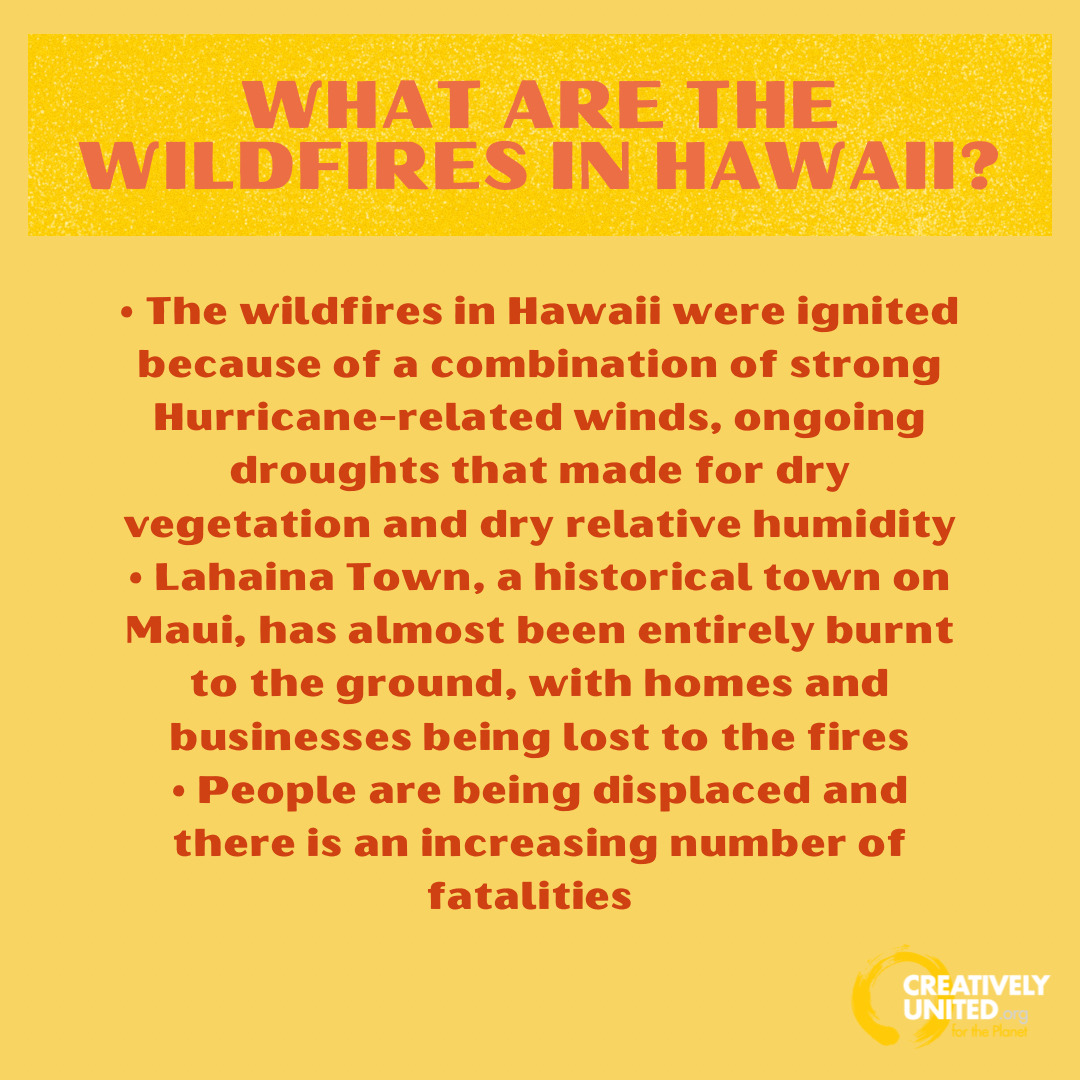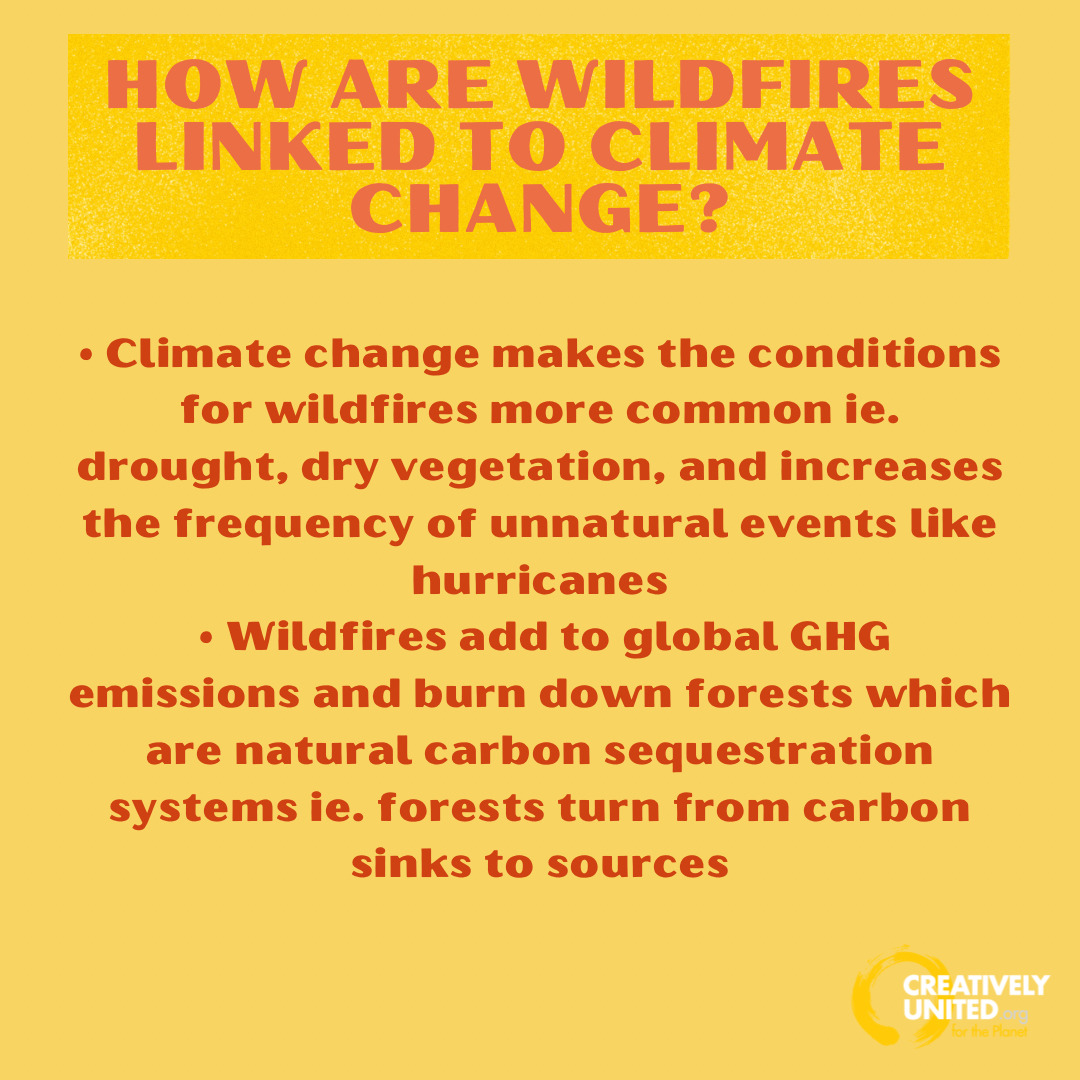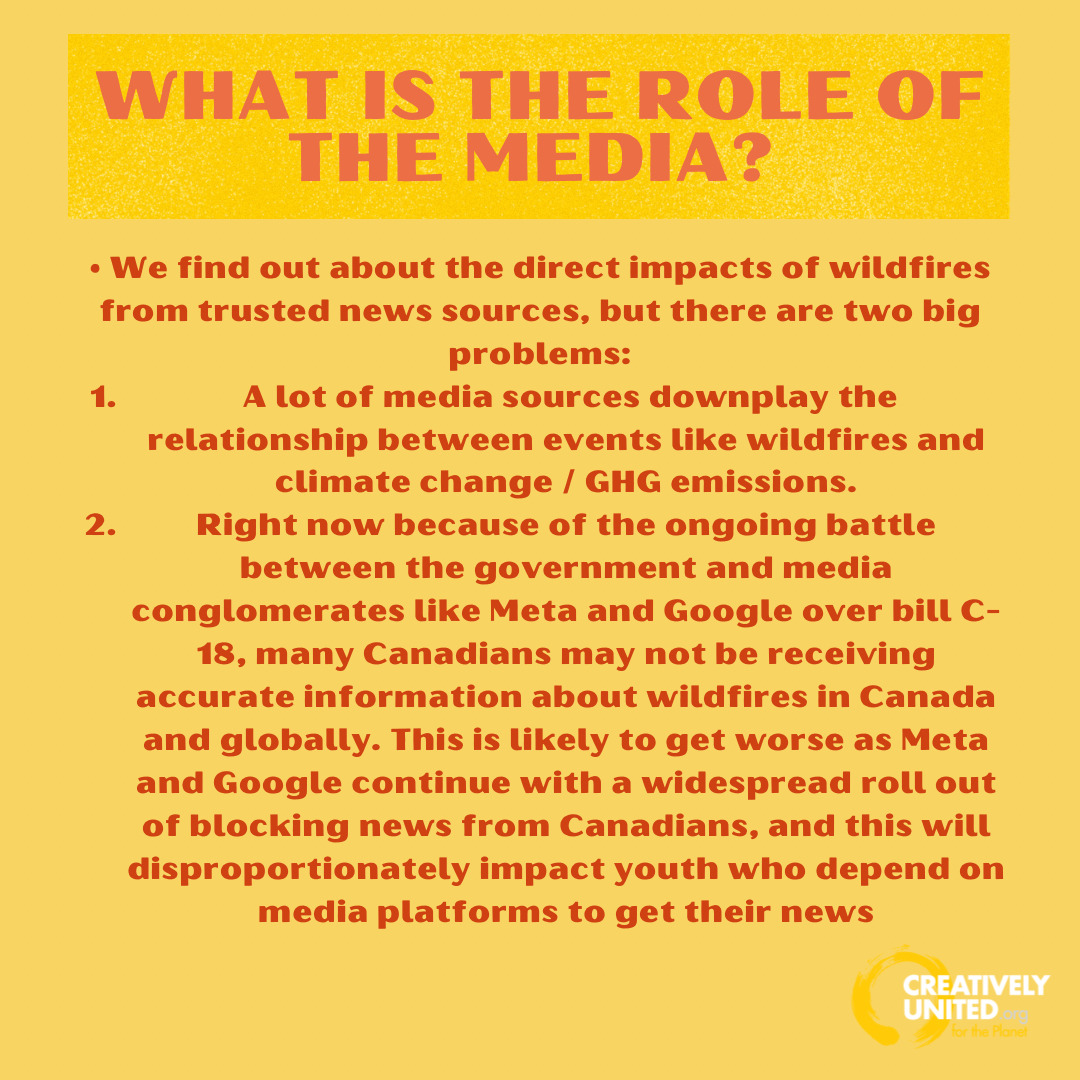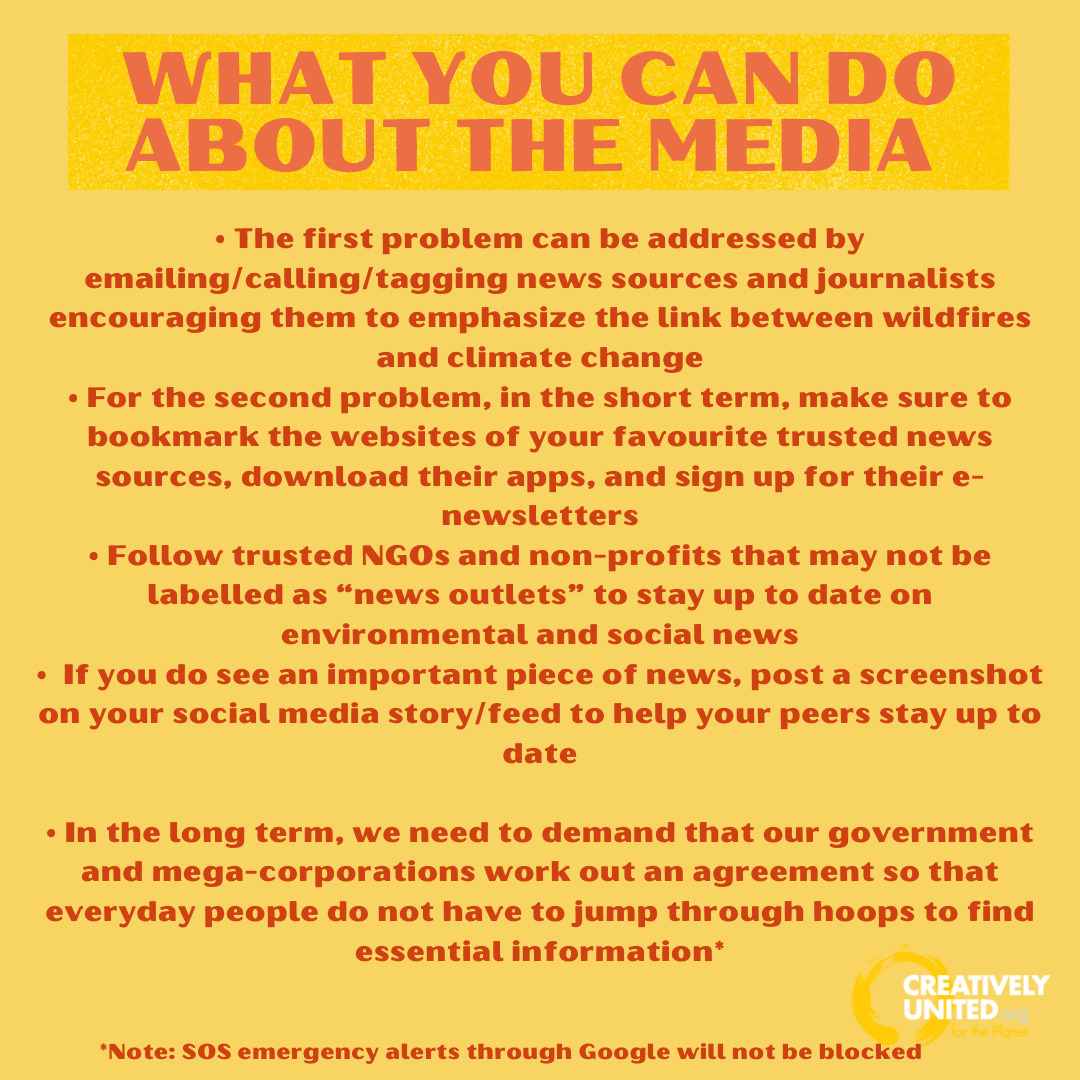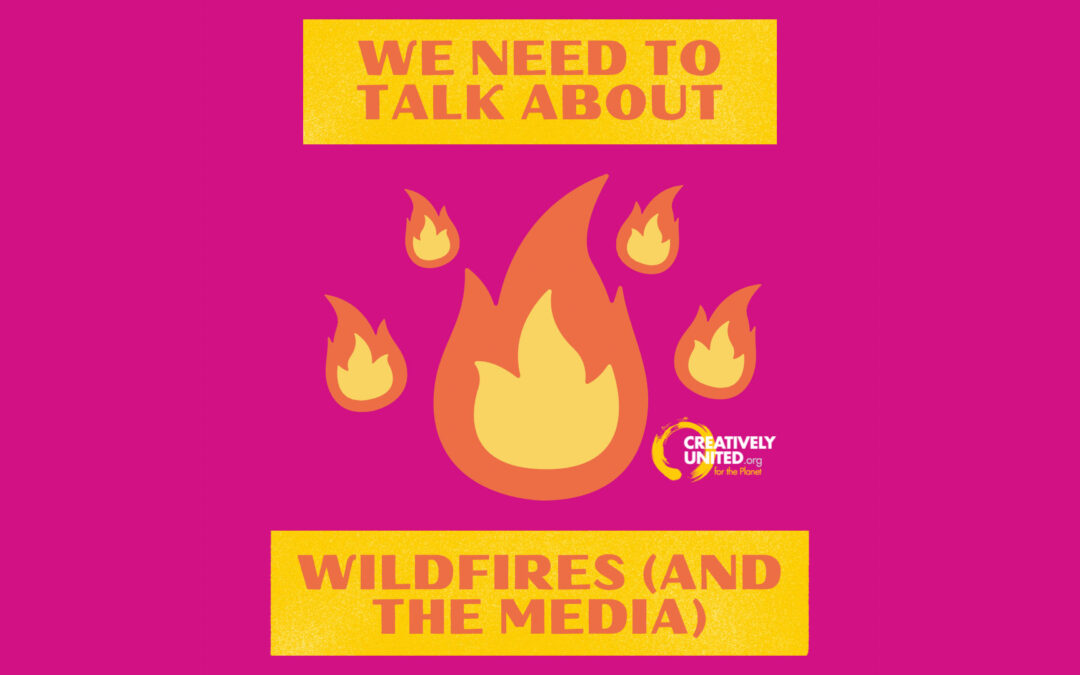You may have seen the news about devastating wildfires raging in Hawaii right now, with one town (Lahaina) being burnt down almost entirely. With wildfires happening across Canada this summer, displacing people in BC, Alberta and Nova Scotia, it’s hard to not feel like this is our new normal. This is climate change. But we can still do something about it!
We wanted to answer some questions you may be asking right now, because education on these topics is important if we are going to work together to push our governments to take climate action, build climate resilient infrastructure and hold corporations accountable.
Unfortunately, there is now another hurdle: media conglomerates blocking news from Canadians. Getting accurate information about environmental and social news is critical, and young people are going to be disproportionately left in the dark. Demanding that this block be lifted is another action we now must take to ensure that we can work together for a better future. But in the meantime, we’ve included some short term solutions to help you get and share information about wildfires and other issues our world is facing.
FYI: We post news to our story, Facebook and blog – make sure to check there to stay up to date!
What are The impacts of wildfires in Canada?
“From 1 January to 31 July, accumulated carbon emissions from wildfires across Canada total 290 megatonnes. This is already more than double the previous record for the year as a whole and represents over 25% of the global total for 2023 to date” – Copernicus, 2023
• Wildfires in Canada have led to the displacement of thousands of people in provinces across the country, including BC, Alberta and Nova Scotia
What are the wildfires in Hawaii?
• The wildfires in Hawaii were ignited because of a combination of strong Hurricane-related winds, ongoing droughts that made for dry vegetation and dry relative humidity
• Lahaina Town, a historical town on Maui, has almost been entirely burnt to the ground, with homes and businesses being lost to the fires
• People are being displaced and there is an increasing number of fatalities
How are global wildfires linked?
• Wildfires in the Northern Hemisphere tend to happen from May to October, peaking in July and August when conditions are the hottest and driest
• Global wildfires add to global GHG emissions, and the total amount of forests and other ecosystems impacted
• The smoke from wildfires travels far, worsening the air quality of multiple provinces, states and countries
How are wildfires linked to climate change?
• Climate change makes the conditions for wildfires more common ie. drought, dry vegetation, and increases the frequency of unnatural events like hurricanes
• Wildfires add to global GHG emissions and burn down forests which are natural carbon sequestration systems ie. forests turn from carbon sinks to sources
What you can do about wildfires?
• In the short term, you can help those impacted in Hawaii by donating to:
https://www.hawaiicommunityfou
www.bit.ly/mauimutualaide
• In the long term, wildfires in Canada and globally are going to continue to happen more frequently with more devastating impacts unless we put pressure on our governments to take real climate action, to build climate resilient infrastructure and to hold corporations accountable
What is the role of the media?
• We find out about the direct impacts of wildfires from trusted news sources, but there are two big problems:
A lot of media sources downplay the relationship between events like wildfires and climate change / GHG emissions.
Right now because of the ongoing battle between the government and media conglomerates like Meta and Google over bill C-18, many Canadians may not be receiving accurate information about wildfires in Canada and globally. This is likely to get worse as Meta and Google continue with a widespread roll out of blocking news from Canadians, and this will disproportionately impact youth who depend on media platforms to get their news
What you can do about the media?
• The first problem can be addressed by emailing/calling/tagging news sources and journalists encouraging them to emphasize the link between wildfires and climate change
• For the second problem, in the short term, make sure to bookmark the websites of your favourite trusted news sources, download their apps, and sign up for their e-newsletters
• Follow trusted NGOs and non-profits that may not be labelled as “news outlets” to stay up to date on environmental and social news
• If you do see an important piece of news, post a screenshot on your social media story/feed to help your peers stay up to date
• In the long term, we need to demand that our government and mega-corporations work out an agreement so that everyday people do not have to jump through hoops to find essential information*
*Note: SOS emergency alerts through Google will not be blocked
SOURCES
CBC News (2019). “Canada’s forests actually emit more carbon than they absorb – despite what you’ve heard on Facebook”. https://www.cbc.ca/amp/1.50114
Copernicus (2023). “A record-breaking boreal wildfire season”. https://atmosphere.copernicus.
CTV News (2023). “Understanding Bill C-18: Canada’s Online News Act explained”. https://beta.ctvnews.ca/nation
Hawaii News Now (2023). “At least 36 people confirmed dead in devastating wildfires: Maui County”. https://www.hawaiinewsnow.com/

